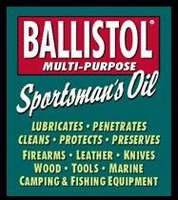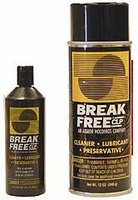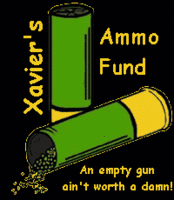Lubricating Handguns
 There are two basic types of lubricants, oil and grease. Grease is used on surfaces that slide across one another, where the lubricant is prone to run out or spray out of place. On a handgun these areas include the slide rails, the hammer hooks and sear nose, and the barrel linking surfaces. As far as which grease to use, I prefer Tetra grease. The reason is simple. It works and I can toss a tube in my buggy any time I am in Wal-Mart. Other greases I have used with success in these areas include Brian Enos' Slide Glide, Brownell's Action Magic, and even Slick 50 wheel bearing grease. The Slick 50 has moly in it and it will stain your clothing, but it works in a pinch. Grease has an undeserved reputation for causing failures in firearms. Years ago, many people would attempt to use white lithium grease on guns. Some still do. Lithium grease will harden and fail to function in firearms use. The modern firearms greases are not the same animal at all. If you do not put grease on the rails of your slide guns, they are not functioning with adequate lubrication after 50 rounds of shooting. Inadequate lubrication equals accelerated wear and failure.
There are two basic types of lubricants, oil and grease. Grease is used on surfaces that slide across one another, where the lubricant is prone to run out or spray out of place. On a handgun these areas include the slide rails, the hammer hooks and sear nose, and the barrel linking surfaces. As far as which grease to use, I prefer Tetra grease. The reason is simple. It works and I can toss a tube in my buggy any time I am in Wal-Mart. Other greases I have used with success in these areas include Brian Enos' Slide Glide, Brownell's Action Magic, and even Slick 50 wheel bearing grease. The Slick 50 has moly in it and it will stain your clothing, but it works in a pinch. Grease has an undeserved reputation for causing failures in firearms. Years ago, many people would attempt to use white lithium grease on guns. Some still do. Lithium grease will harden and fail to function in firearms use. The modern firearms greases are not the same animal at all. If you do not put grease on the rails of your slide guns, they are not functioning with adequate lubrication after 50 rounds of shooting. Inadequate lubrication equals accelerated wear and failure. 
 I use oils only on parts that pivot, or areas that need a little lube, but where grease would present a problem. These areas include hammer, sear and trigger pins or on a 1911, the trigger stirrup. Mainsprings in their housings and recoil springs get oil. I learned to like Breakfree CLP while I was in the military. It is my staple oil for guns. I also use Ballistol. Ballistol was one of the original CLPs, developed for the German Army in 1905. There are few things as slick as Ballistol. I will use it when lapping finely fitted parts together, as well as for an oil type lube. Ballistol will provide a lubricating surface where other oils cannot penetrate.
I use oils only on parts that pivot, or areas that need a little lube, but where grease would present a problem. These areas include hammer, sear and trigger pins or on a 1911, the trigger stirrup. Mainsprings in their housings and recoil springs get oil. I learned to like Breakfree CLP while I was in the military. It is my staple oil for guns. I also use Ballistol. Ballistol was one of the original CLPs, developed for the German Army in 1905. There are few things as slick as Ballistol. I will use it when lapping finely fitted parts together, as well as for an oil type lube. Ballistol will provide a lubricating surface where other oils cannot penetrate. One other type of lubricant I use is powdered graphite.
 Powdered graphite is great for lubricating magazine followers and springs. It works well on rifle bolts. I also use it on enclosed rimfire pistol bolts, such as the bolt in a Ruger MKII. Powdered graphite can be found in any hardware store. I have a three ounce bottle of graphite that has lasted me over 20 years. This stuff goes a long way.
Powdered graphite is great for lubricating magazine followers and springs. It works well on rifle bolts. I also use it on enclosed rimfire pistol bolts, such as the bolt in a Ruger MKII. Powdered graphite can be found in any hardware store. I have a three ounce bottle of graphite that has lasted me over 20 years. This stuff goes a long way. Firearms are machines with moving parts. Some of those parts move quite suddenly under severe pressure to the load bearing surfaces. Few people ask other machines to function under the same stress without lubricant. Gun owners ask their guns to work under the same conditions daily. When the gun fails, it's lack of reliability is blamed on anything but the owner's decision to shoot it dry. If we drain the oil from our crankcase and proceed to drive down the road, we can expect our automobile to fail abruptly. When we do the same with our gun, we should not be surprised at it's failure. Lubricate your guns. They will last longer and shoot better.
Grant Cunningham's thoughts on lubrication
Labels: Gun Maintenance








6 Comments:
My experience with tetra is that eventually it will go bad and get the STANK.
As far as greases go it's hard to go wrong with a moly grease, that's essentially what Brownell's action lube plus is. Interestingly Glock uses a tiny amount of a copper anti-seize grease on their slides.
Lastly, GM competition shooters I know use Mobil One + STP. If you go that route you can get a lifetime supply of gun oil for eight bucks or so.
I am fabulously in love with slide glide. Slide glide and a little dab of FP-10 and I'm set on my STI limited gun.
It's a bit heavy in my idpa gun - a Springfield XD in 9mm. In that case I just use FP-10.
I agree with you though - a lubed gun is a happy gun. :)
Hi Xavier
You have the best blog on guns and related issues, and one of the best on the web. You are an excellent observer and writer. Keep it going.
I like your advice on Tretra Gun Grease. Will it harm the polymer frame of my Ruger P95? The slide runs directly on the polymer, without metal inserts on the plastic frame.
Tetra shouldn't harm a polymer frame. Lack of lubricant though would quickly war it down, unless it was impregnated with silicone or something similar. Of course, such a material would be present throughout the molding, including in the grips, making for a slick hard to keep a hold to surface.
Thanks for the kind comments.
Xavier
CLP? Jack of all trades and master of none. I prefer a standalone cleaner and lube. I use TW-25B quite often. Love the Slide Glide in 1911's.
If there's a better grease than Gunslick graphite grease, I'm still waiting to find it.
Post a Comment
<< Home